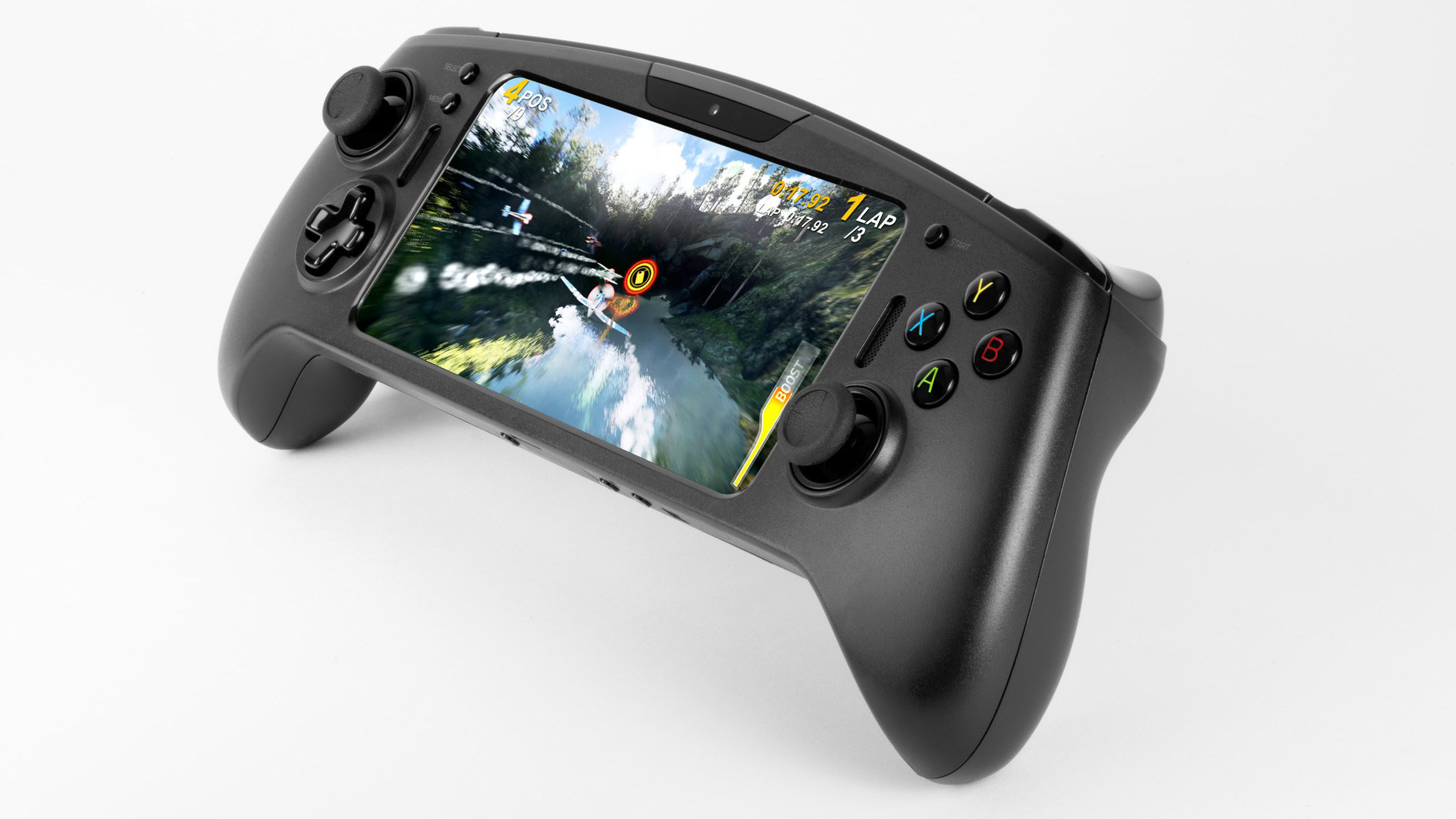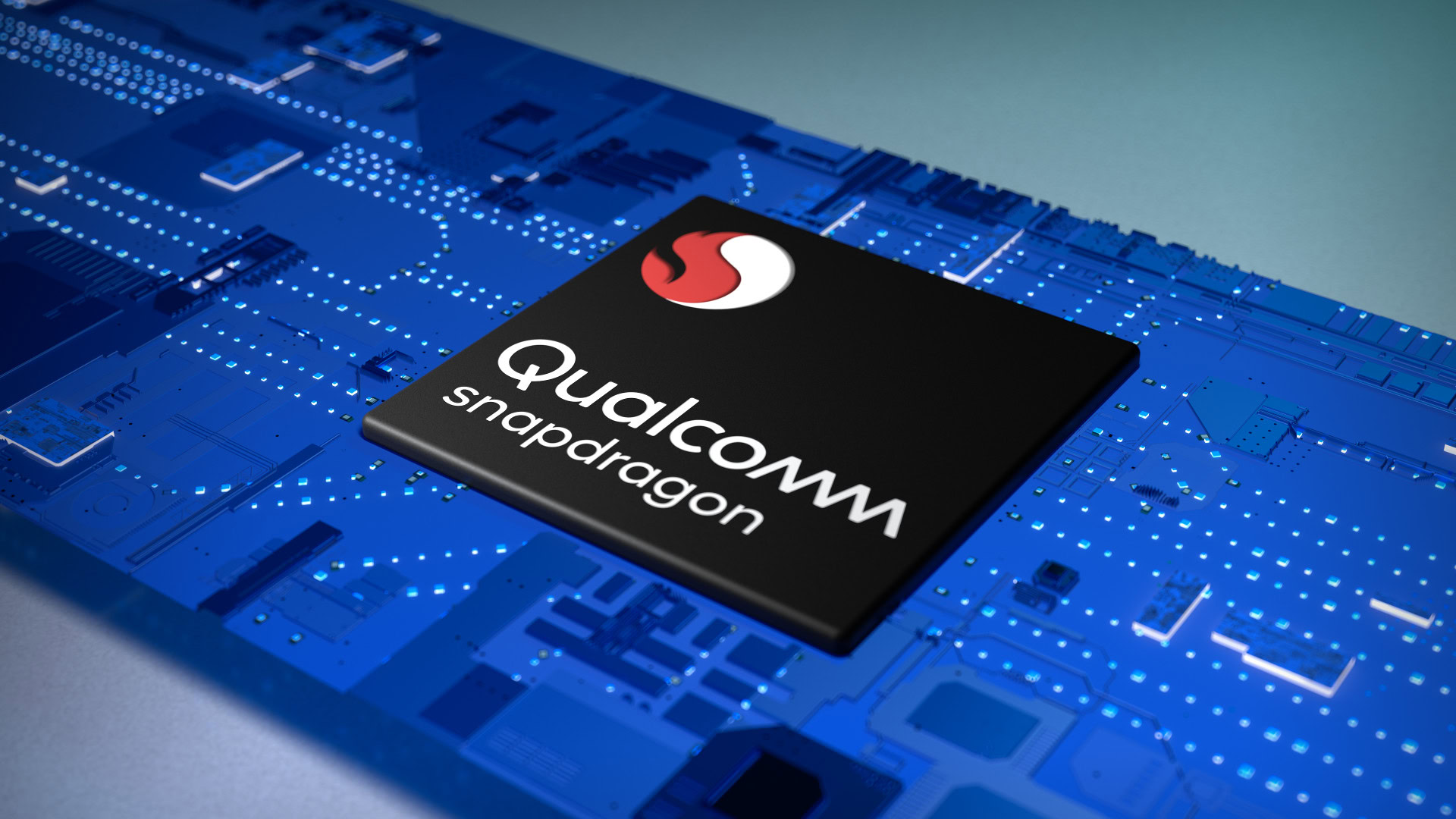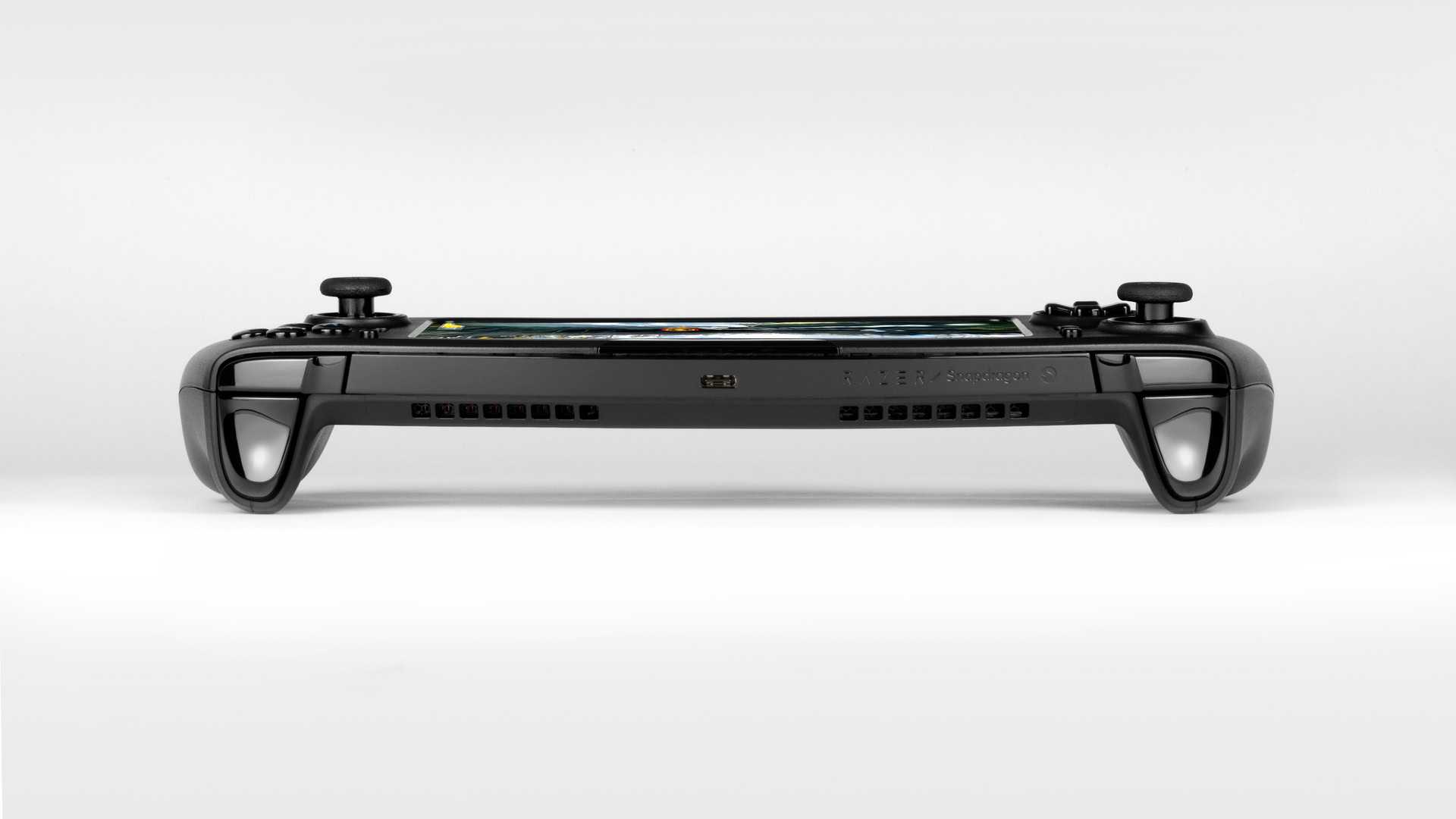Affiliate links on Android Authority may earn us a commission. Learn more.
Qualcomm's new chips target PCs, handheld gaming consoles
December 1, 2021

Qualcomm has been in the Windows on Arm space for several years now, dating back to the Snapdragon 835 powering the first wave of Windows on Arm laptops back in 2018.
We’ve since seen the Snapdragon 8cx range become the flagship processor in this range, and Qualcomm has now launched the Snapdragon 8cx Gen 3 at the Snapdragon Tech Summit. But the company also revealed a new mid-range PC processor, a handheld gaming SoC, and a handheld developer kit (seen above). Here’s what you should know.
Snapdragon 8cx Gen 3: A top-end offering

The new high-end Snapdragon computer chip is shaping up to be a major upgrade over the Snapdragon 8cx Gen 2, which was only a mild upgrade over the first-generation effort. For starters, we’ve got a 5nm design for the first time in Windows machines.
CPU details are murkier though, with Qualcomm simply saying there’s a “new” Kryo CPU and bigger cores. The company says you can expect an 85% performance boost in multi-threaded performance and a 40% gain for single-threaded tasks. Unfortunately, the firm didn’t clarify the CPU setup and the performance boost doesn’t tell us much. But XDA-Developers reports that we’re looking at four Cortex-X1 cores and four Cortex-A78 cores. This would indeed be a big boost over previous flagship Arm PC offerings if confirmed.
Moving to the GPU department, Qualcomm is similarly cagey about GPU details, merely saying the Snapdragon 8cx Gen 3 offers a 60% performance boost over the previous chipset. Again, the Gen 2 was derived from 2019’s Snapdragon 855, so it’s no surprise to see such a big generational gain.
Related: Microsoft Surface Pro X review — The pros and cons of Windows on Arm
Machine learning also enjoys a solid boost, with the US chip designer claiming 29+ TOPS (trillion operations per second) of machine learning performance.
Oddly enough, this chipset doesn’t have an integrated modem. Instead, OEMs can choose the latest and greatest Snapdragon X65 modem, Snapdragon X55, or Snapdragon X62. It’s unclear if OEMs will be allowed to ship a device without a modem at all (relying on Wi-Fi only), potentially bringing down costs in the process. Although this might go against Qualcomm’s always-connected philosophy it’s espoused from the start for its Windows chipsets.
Other notable Snapdragon 8cx Gen 3 features include Wi-Fi 6E connectivity, Bluetooth 5.1, support for up to four cameras, a single camera up to 24MP, 4K HDR recording, and variable refresh rate support (120Hz).
Between the 5nm design and TOPS figures, it sounds like this new chipset might share some DNA with the Snapdragon 888, but we’ll need to wait for more specs to emerge.
Snapdragon 7C Plus Gen 3: A mid-range upgrade

Qualcomm also had a second computer chipset up its sleeve with the Snapdragon 7C Plus Gen 3 (that isn’t a mouthful at all), targeting Chromebooks and cheaper PCs. The first upgrade is the manufacturing process, moving from the predecessor’s 8nm design to 6nm instead.
Much like the Snapdragon 8cx Gen 3 though, Qualcomm isn’t exactly dishing out exact details regarding the CPU setup. The firm simply says you’re getting a 60% performance boost in this regard, as well as a 70% faster GPU. For what it’s worth, the Snapdragon 7C Gen 2 packed an octa-core CPU featuring two Cortex-A76 cores and six Cortex-A55 cores.
The Snapdragon 7C Plus Gen 3 seems to bring a much-needed boost to mid-range Windows on Arm devices.
The US chip designer also says you can expect 6.5 TOPS of machine learning performance, compared to just over 5 TOPS with the previous processor. Furthermore, the new processor sports a Snapdragon X53 modem, delivering mmWave and sub-6GHz support as well as downlink speeds of up to 3.7Gbps.
As for a release date, Qualcomm says the first devices powered by the Snapdragon 8cx Gen 3 and 7C Plus Gen 3 are expected in the first half of 2022. So you won’t have long to wait to get your hands on a laptop powered by this tech.
Snapdragon G3X Gen 1: A handheld gaming SoC

We’ve also got a Snapdragon chipset for a new category this time, as Qualcomm targets handheld gaming consoles with the Snapdragon G3X Gen 1. This gaming-focused SoC offers active cooling support, integrated gamepad support, 144Hz refresh rate capabilities, and external display support at 4K/60fps.
The firm is tight-lipped on specifics regarding the CPU and GPU again, aside from telling Android Authority that the GPU and CPU were “taken from our 8-series.” That’s quite ambiguous though, as it doesn’t necessarily mean we’ve got a Snapdragon 8 Gen 1 CPU or GPU in here — it could theoretically mean much older tech. Hopefully, Qualcomm is talking newer rather than older in this regard.
We’re also getting a host of other features here, including 5G support (both sub-6GHz and mmWave), Bluetooth 5.2, Wi-Fi 6E, 1080p/60fps video capture for live-streaming while gaming, the ability to tether accessories via USB-C (such as augmented or virtual reality viewers), and aptX adaptive audio support.

There are a variety of niche Android-based handhelds out there, with many either using MediaTek power, mid-range Snapdragon silicon, or older flagship Snapdragon SoCs due to price/performance considerations. So hopefully the G3X Gen 1 is cheap and performant enough to find its way into these handhelds in the first place.
Qualcomm is also teaming up with Razer to build a handheld gaming developer kit powered by the Snapdragon G3X Gen 1 (available to developers today). This machine sports active cooling, integrated controls, a 6.65-inch FHD+ 120Hz OLED panel, a 6,000mAh battery, button mapping support, a 5MP webcam, and DisplayPort output via USB-C.
More reading: The best phones for gaming you should consider
So when can we actually buy the first commercial Android handhelds with this chipset? Unfortunately, the chip designer didn’t have more to share at the time. Nevertheless, we do wonder about the push into the Android handheld space.
Qualcomm says the chipset is designed with local Android games and game streaming in mind. But these activities can already be done by pairing a controller with an existing smartphone. So perhaps those looking for a more integrated solution might want to keep an eye on this field.
Do you think Qualcomm’s latest PC-based chipsets (especially the Snapdragon 8cx Gen 3) will be enough to take the fight to Apple and its computer silicon? Let us know via the poll below.